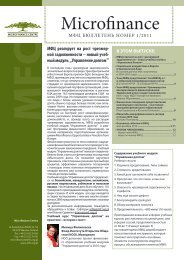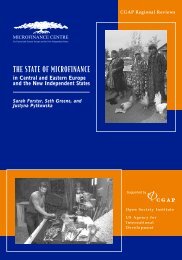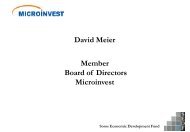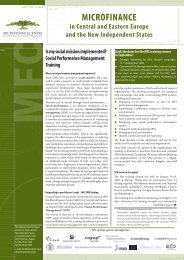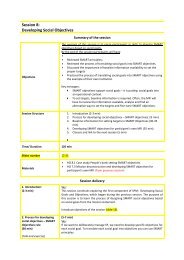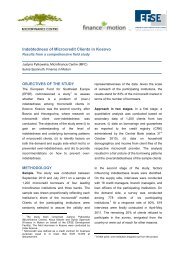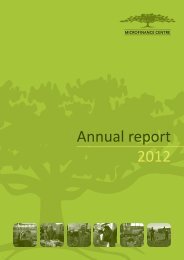Value Chains research report Tajikistan final - Microfinance Centre
Value Chains research report Tajikistan final - Microfinance Centre
Value Chains research report Tajikistan final - Microfinance Centre
You also want an ePaper? Increase the reach of your titles
YUMPU automatically turns print PDFs into web optimized ePapers that Google loves.
from March to July. Bee queens can be sold from April to May. Comb honey is<br />
available in July and August. Bee bread and royal jelly are available from April till the<br />
end of July, while bee venom can be ordered for delivery in May-July. Almost all<br />
beekeepers are relatively free from November 15-20 to February-March. Beekeepers<br />
sell bee packs, but the demand for them is very low. These are purchased by local<br />
beekeepers or exported to Kazakhstan and Russia. All beekeepers sell the bee packs,<br />
but buyers aren’t numerous.<br />
Secondary products of beekeeping are: flower pollen (bee bread), royal jelly,<br />
apitoxin (bee venom), propolis, and bee packs. Wax is the biggest by-product of<br />
beekeeping. Such products as bee venom, propolis, bee bread and royal jelly can be<br />
produced if there is enough demand and buyers. For now, most beekeepers do not<br />
have equipment or knowledge to produce products like bee venom or bee bread. As<br />
mentioned in Khujand, provided sufficient demand, each beekeeper can produce up to<br />
10 kg of bee bread, 250 g of royal jelly and 1 kg of propolis. Cotton honey is collected<br />
in areas where there are large areas under cotton, as well as in Uzbekistan (using bee<br />
houses placed along the border). Mountain cotton is collected in mountainous and<br />
piedmont areas.<br />
Currently, before setting up a trailer with bee houses at a plot of land,<br />
beekeepers pay the land owners a fee for usage. Before, the price per trailer was 100<br />
Somoni; now land owners demand 300 Somoni, or set the rent based on the amount<br />
of honey collected. If the fee is not agreed, beekeepers are not allowed to the land.<br />
Meanwhile, in the Soviet times, beekeepers were paid 5 rubles for each bee family.<br />
Another issue related to stationing the bee yards is crossing of bee routes and<br />
bee yards, and insufficient distance between the bee yards. Farmers allow several bee<br />
yards to be placed within several kilometers from one another, even though the rules<br />
require the minimum distance of six km.<br />
The issue of bee yards requires the Association of Beekeepers to work with<br />
farmers, government bodies and organizations working with farmers, through the<br />
media, on the role of bees in pollination, and it is also necessary to increase the role<br />
played by beekeeping in agriculture.<br />
108




